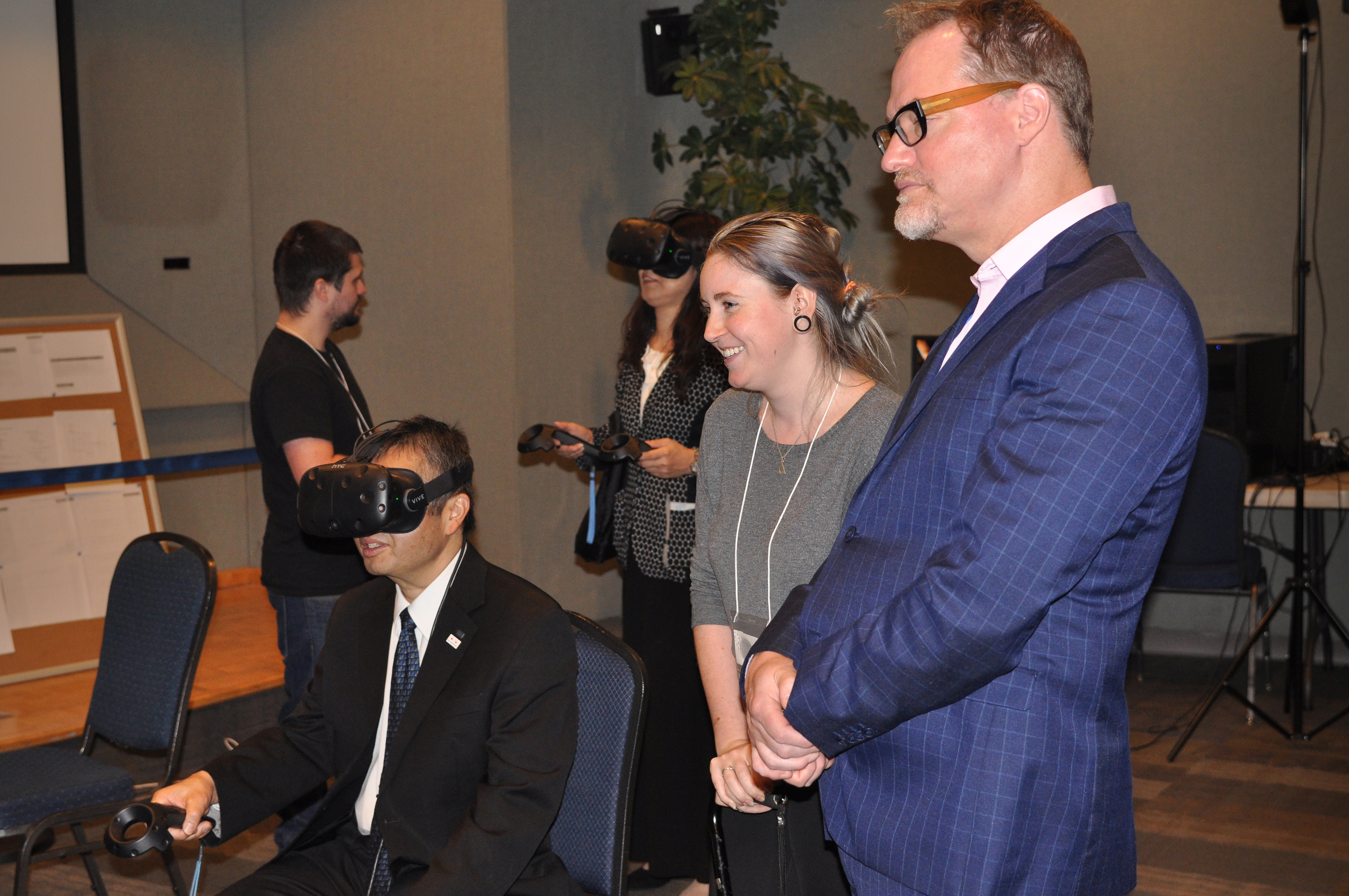Museum visitors offer valuable input in development of space simulation game

As a student in the Game Development program at Algonquin College, I never thought I’d be working on my final, cumulative project at a museum!
Perhaps I should give you a little bit of the back story. Thanks to a partnership between Algonquin College and the Canada Aviation and Space Museum, a space simulation game in Virtual Reality (VR) is benefiting from the interactive feedback of museum visitors.
Minerva Prime has been in development since September of 2017, by two different teams of third-year students from the Game Development program. The teams have actively been using the museum’s Bush Theatre as a “living lab” — creating a transparent development area where the public can engage with VR developers.
The game is set on Minerva Prime — which is an exo-planet that has been colonized. You, the player, are a first responder living on that planet. You can try out missions that range from being heavily related to STEM (Science, Technology, Engineering, and Math) to wandering the colony to see what everyday life might look like in the future.

One of Minerva Prime’s many rockets, seen here in the midst of a dust storm, being unloaded of its supplies from a nearby Space Station. The planet’s terrain is mainly composed of copper carbonate and nickel carbonate, which gives the ground and dust a blue/green hue.
Currently, Minerva Prime is in its second and final phase. The project was handed over to our current team during the spring of 2018, with a solid foundation to build on. Since taking it over, we’ve expanded the previous team’s polished mission into five separate missions, as well as a main VR hub and colony to explore.
My role in the Minerva Prime project is project manager and programmer. I oversee both sides of the project, art and programming, and make sure the team is on track with deadlines and hitting milestones. It’s a lot of work, but it’s given me a good idea of what working in a Game Development studio will be like!
Typically, our team is at the museum on Fridays from 11 a.m. to 3 p.m., Saturdays from noon to 4 p.m., and Mondays from 11:30 a.m. to 3:30 p.m. Depending on our deadlines, we’ll open up the Bush Theatre for questions, demos, or just observation for a couple hours at a time. For each time slot, we always post what “mode” we’ll be in.
The different modes focus on giving museum-goers a look behind the scenes of making a video game. Demos give them a chance to try Minerva Prime out for themselves; we get valuable feedback from our target audience, and the public gets to see the game grow and change over time, based on that very feedback!
Feedback is a huge part of Game Development for a couple of reasons. Testing Minerva Prime ourselves doesn’t give us a clear idea of whether or not something is working properly because we, as developers, are too familiar with the game. People who don’t normally play video games often are the best to test it out, so we can see if we’ve made things clear enough in the game, and most importantly — fun enough. Since Minerva Prime is set up in the Bush Theatre, we are given the opportunity to test out the game with our target audience as often as three times a week. This means we can also test out new features in their early stages, and catch any critical bugs early on.
Opening up the theatre for questions means the public is able to come in and ask any questions about Game Development, Minerva Prime, and anything in between! We’re always working on something, so they’ll also be able to see art assets in progress, and new features being debugged and tested along the way.
I hope to see you at the Canada Aviation and Space Museum soon; stop by and take Minerva Prime for a test drive yourself!

Dr. Koichi Wakata (left), JAXA vice president and astronaut, tries out Minerva Prime in October 2018, while Algonquin College student Allissia Le Hénaff (centre) and museum director Chris Kitzan stand by.








